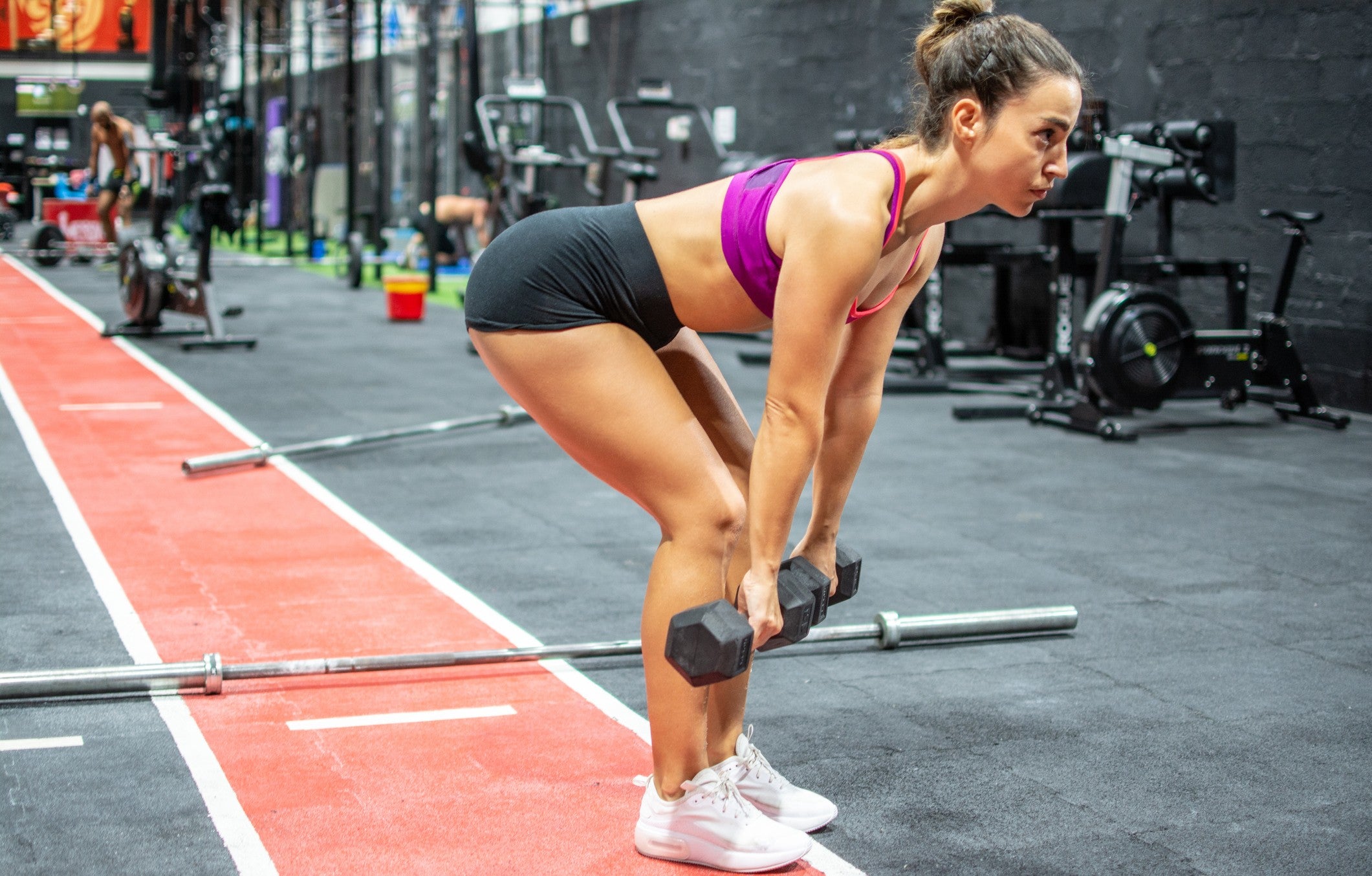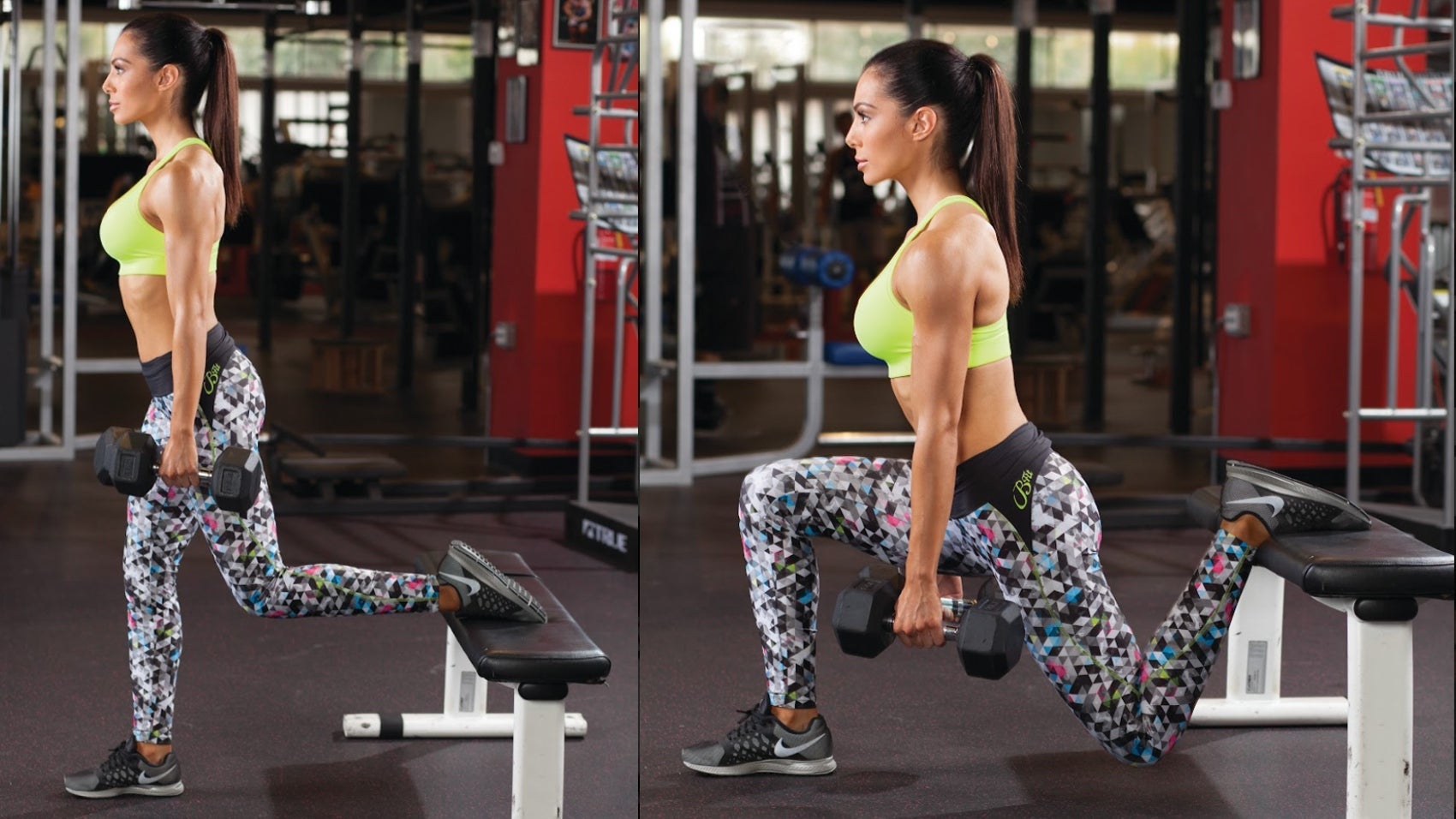Glutes may not win a bodybuilding competition on their own — but they surely can lose one if they’re not developed to perfection. You probably aren’t after the striations and extreme glute development of a typical pro, but the truth is, the same exercises and techniques that help them achieve world-class results can help anyone after a better booty and the glute strength needed to support so many other exercises.
“For this workout, I’ve picked some old-school favorites that are proven to actively engage and challenge the glutes,” says personal trainer and group exercise instructor Samantha Clayton, Vice President of Worldwide Sports Performance and Fitness for Herbalife and a former Olympic sprinter who competed for the U.K. in the Sydney 2000 Games. “And the great thing about exercises that work the glutes is that they also engage several other important muscles as well, including the quads, hamstrings, and core. So, you’ll get some whole-body benefits every time you do it.”
The regimen includes five exercises, with a mix of split and standard stance moves to challenge your balance and stability as you directly attack the gluteus maximus muscles. “Do three sets of 8-10 reps apiece,” Clayton says. “I’d also recommend one warm-up set of 12 reps with just bodyweight for each, which serves as a warm-up and as a chance to get into the groove with your form.”
When it comes to choosing your dumbbells and kettlebells, don’t be shy about pushing yourself, Clayton adds. “You want to pick a weight that forces you to dig deep to complete those last 1-2 reps of the set.”
| Exercise | Sets | Reps |
| Goblet Squat | 3-4 | 8-10 |
| Reverse Dumbbell Lunge | 3-4 | 8-10 |
| Stiff-Legged Deadlift | 3-4 | 8-10 |
| Bulgarian Split Squat | 3-4 | 8-10 |
| Supine Glute Bridge Lift | 3-4 | 8-10 |
| Treadmill Incline Challenge* | 6 | 30 sec. sprint/30 sec. walk |
* “I love to end glute workouts with a treadmill hill challenger,” Clayton says. “Crank up that incline as high as you can handle and do six rounds of 30 second sprints paired with 30 seconds at a walking pace.”
Goblet Squat
Samantha Says: “When doing a goblet squat, the ‘single weight hold position’ allows people to get deeper into the squat that with a standard barbell — and this deeper position really challenges the glutes. For an extra boost, squeeze the glutes on each rep as you reach the top of the movement.”
How-To: Take a stable, wide stance just outside shoulder width. Hold a kettlebell close to your chest with the handle just under your chin, grasping it with both hands, one on each side of the handle. (If you don’t have kettlebells at the ready, you can also hold a dumbbell by cradling the inside of the upper plate.) From here, drop your hips and bend your knees to squat straight down — as you descend, push your knees outward and keep your weight on your heels. Return to the starting position by driving through your heels.
Reverse Dumbbell Lunge

Samantha Says: “Reverse lunges are a single-leg movement pattern that encourages muscle activation of many of the stabilizing muscles of the lower body, including the core. Most importantly, the glutes are activated on the way down and on the push back to standing, making it a truly stimulating exercise for the target muscles.”
How-To: Holding dumbbells in each hand, step backward with one foot into a lunge position. Bend both knees to lower yourself, making sure your front knee doesn’t pass your toes. Stop when your front knee forms a 90-degree angle and at a point just short of your rear knee touching the floor and reverse directions, driving through the heel of your forward foot to return to the start.
Stiff-Legged Deadlift

Samantha Says: “You can’t argue with the stiff-legged deadlift for blasting the glutes. It also hits the back, hips and core in a big way. This exercise is so great for strengthening the lower body in a way that makes you better at other lower-body exercises.”
How-To: Stand upright holding dumbbells against the front of your thighs. Keep your feet shoulder-width apart and a slight bend in your knees. Keeping your chest up, core tight and the natural arch in your low back, lean forward from your hips, pushing them rearward until your torso is roughly parallel to the floor. As you lean forward, keep your arms straight and slide the weights down your thighs toward the floor until they reach your shins. At the bottom, keep your back flat and head neutral as you flex your glutes and hamstrings to lift your torso while pushing your hips forward until you reach a standing position.
Bulgarian Split Squat

Samantha Says: “Split squats with your back foot raised is a tried and tested old-school move. Do it with dumbbells in each hand and hinge slightly forward at the hips — to be clear, it’s not a bend, but instead a forward lean that helps encourage more glute engagement as you do your reps.”
How-To: Holding a dumbbell in each hand, step forward with one foot and rest your rear foot on a bench, top side down. Adjust your upper body so that you have a slight forward lean by hinging at the tips. Next, bend your front leg to lower yourself, making sure that knee doesn’t track out ahead of your toes — if it does, you need to take a longer step out from the bench. When your knee joint reaches 90 degrees, reverse the motion, driving through the heel of your forward foot to return to the start.
Supine Glute Bridge Lift

Samantha Says: “This is a perfect posterior chain exercise that can be completed with or without holding weights. For added intensity, focus on squeezing your glutes throughout and hold the top of each rep for three seconds.
How-To: Lie faceup on the floor, with your knees bent and feet flat. Keep your arms at your sides with your palms down. Lift your hips off the floor until your knees, hips and shoulders form a straight line. Squeeze those glutes hard for a three-count, and keep your abs drawn in so you don’t overextend your back during the exercise, before easing back down. “Be careful not to hyper extend when doing a glute bridge — it gives no added benefit and is not good for your spinal health,” Clayton adds.
